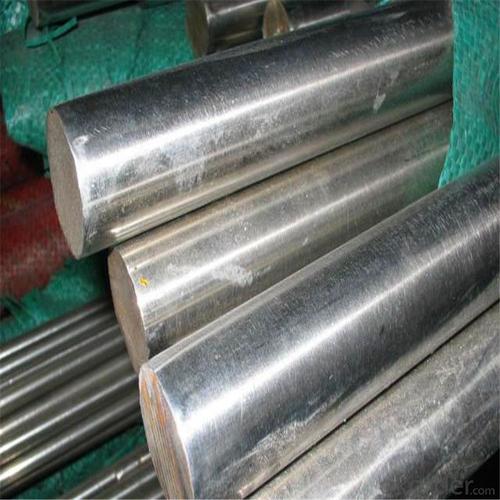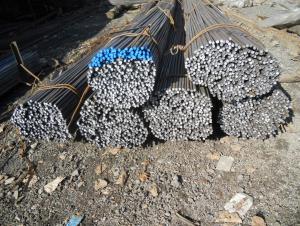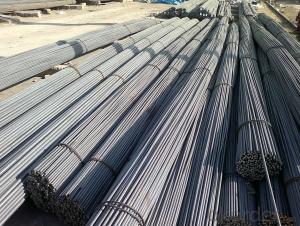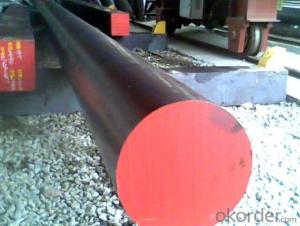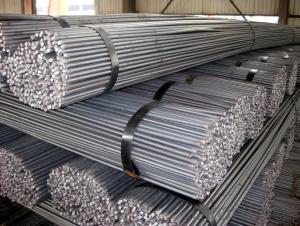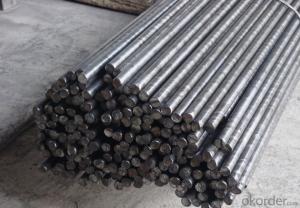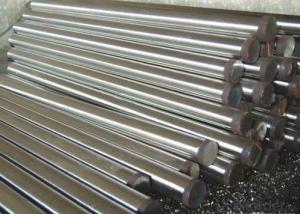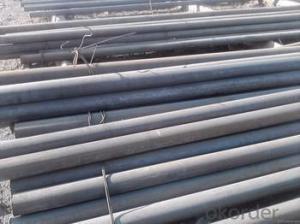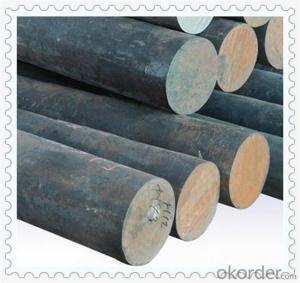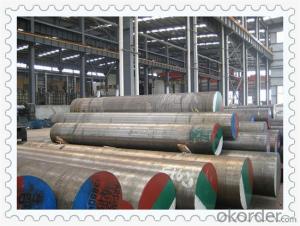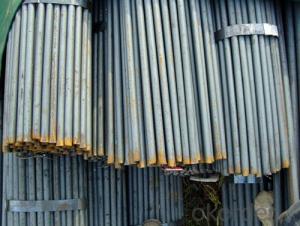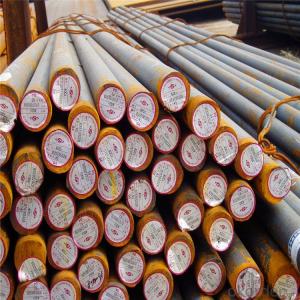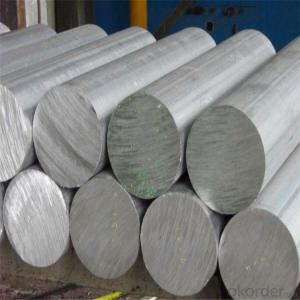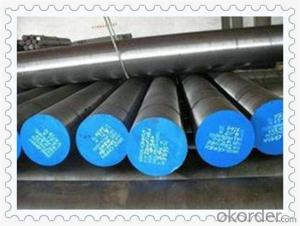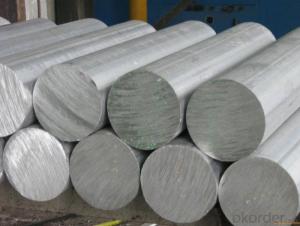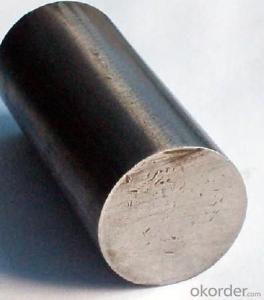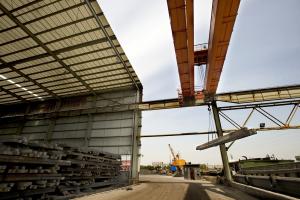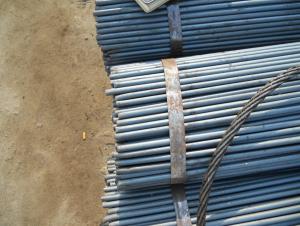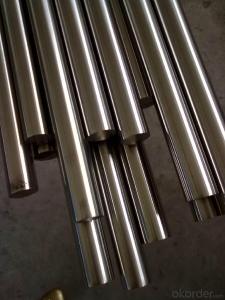Hot Rolled Carbon Steel Round Bar SAE1045 ASTM1045
- Loading Port:
- Tianjin
- Payment Terms:
- TT OR LC
- Min Order Qty:
- 100 m.t.
- Supply Capability:
- 500000 m.t./month
OKorder Service Pledge
OKorder Financial Service
You Might Also Like
Specification
Hot Rolled Carbon Steel Round Bar SAE1045 ASTM1045
Product Description of Hot Rolled Carbon Steel Round Bar SAE1045 ASTM1045
1. Steel grade: SAE1045, 45#, C45, S45C
2. Length: 6M-12M
3. Diameter: 16mm-300mm
4. Product range: round bar, flat bar, square bar
5. Technique: Hot rolled, forged, cold drawn
Specification of Hot Rolled Carbon Steel Round Bar SAE1045 ASTM1045
Material | SAE45 | 16-300mm | ||
Process | EAF + LF + VD + Forged + Heat Treatment (optional) | Length (mm) | Max 12m | |
Heat treatment | Normalized / Annealed / Quenched / tempered | Flat bar | Thickness(mm) | 8-500mm |
Delivery condition | Hot forged +Rough machined (black surface after Q/T)+ Turned (optional) | Width(mm) | 70-200mm | |
Test | Ultrasonic test according to SEP 1921-84 D/d | Length (mm) | Max 12m |
Chemical Composition of Hot Rolled Carbon Steel Round Bar SAE1045 ASTM1045
C | Si | Mn | Cr | Ni | Cu |
0.40~0.49 | 0.17~0.37 | 0.35~0.65 | ≤0.25 | ≤0.30 | ≤0.25 |
Photo Show of Hot Rolled Carbon Steel Round Bar SAE1045 ASTM1045
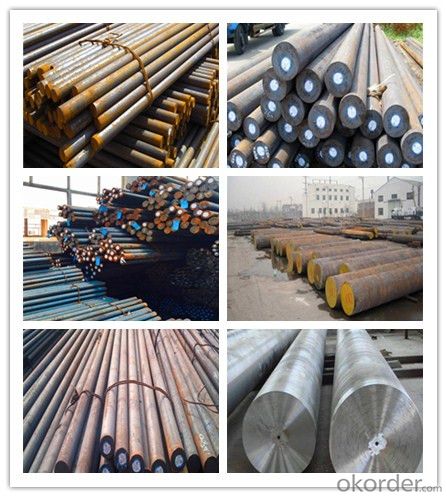
Packing and Delivery:
Packing in bundle package, or as customer's requirements.
Delivery Detail: 45 days after receiving the deposit.
Usage and Applications of Hot Rolled Carbon Steel Round Bar SAE1045 ASTM1045
1. Steel round bar is used in a large number of architectural and engineering structures. Or it can be used in construction of plants for the production of steel house frames, high-voltage transmission towers, bridges, vehicles, boilers, containers, ships, etc.
2. And we can use this kind of product on the performance of the mechanical parts if the demand is not very high.
3. Some special material steel round bar can be used for main shaft of steamer, hummer shank, with big section and supper force.
Company Information
CNBM International Corporation is the most important trading platform of CNBM group.
Whith its advantages, CNBM International are mainly concentrate on Cement, Glass, Iron and Steel, Ceramics industries and devotes herself for supplying high qulity series of refractories as well as technical consultancies and logistics solutions.

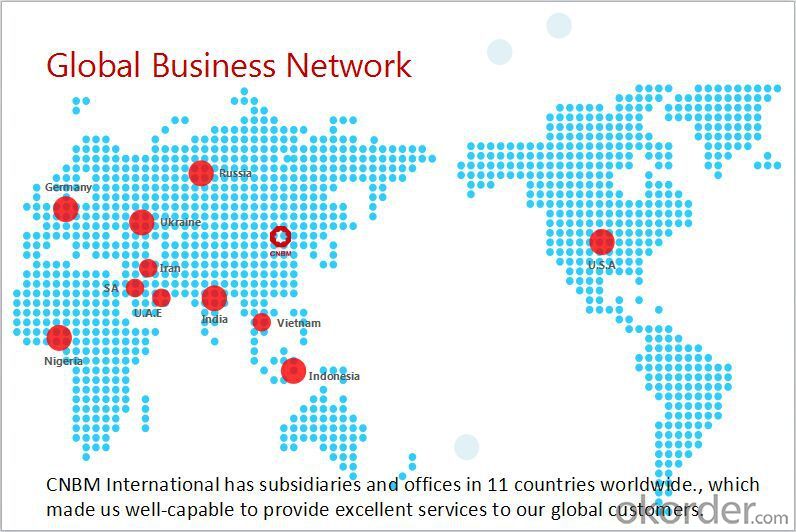
F A Q
1, Your advantages?
professional products inquiry, products knowledge train (for agents), smooth goods delivery, excellent customer solution proposale
2, Test & Certificate?
SGS test is available, customer inspection before shipping is welcome, third party inspection is no problem
3, Factory or Trading Company?
CNBM is a trading company but we have so many protocol factories and CNBM works as a trading department of these factories. Also CNBM is the holding company of many factories.
4, Payment Terms?
30% TT as deposit and 70% before delivery.
Irrevocable L/C at sight.
5, Trading Terms?
EXW, FOB, CIF, FFR, CNF
6, After-sale Service?
CNBM provides the services and support you need for every step of our cooperation. We're the business partner you can trust.
For any problem, please kindly contact us at any your convenient time.
We'll reply you in our first priority within 24 hours.
- Q: How are steel round bars used in the manufacturing of material handling equipment?
- Material handling equipment commonly incorporates steel round bars due to their strength and durability. These bars are integral components in the construction of equipment such as cranes, forklifts, conveyors, and hoists. A primary application of steel round bars in material handling equipment is their use in load-bearing structures. They are specifically utilized in the construction of masts, booms, and jibs of cranes and hoists, as these components must endure heavy loads and provide stability. Steel's high tensile strength and resistance to bending make it an optimal choice for these critical parts. In addition, steel round bars are employed for shafts and axles in material handling equipment. These components play a vital role in transmitting power and torque, facilitating efficient equipment operation. Steel's ability to withstand substantial stress and torsional forces makes it an ideal material for these purposes. Steel round bars are also commonly utilized in the fabrication of lifting attachments and hooks for material handling equipment. These bars are skillfully shaped and welded to create the necessary lifting mechanisms, ensuring safe and secure transportation of heavy loads. Steel's strength and rigidity enable it to withstand the forces exerted during lifting operations. Furthermore, steel round bars find application in the manufacturing of conveyor systems. These bars function as rollers or shafts, supporting and guiding the movement of materials along conveyor belts. The smooth surface of steel bars minimizes friction, enabling efficient material handling. In conclusion, steel round bars are indispensable in the manufacturing of material handling equipment. Their strength, durability, and versatility render them suitable for a wide range of applications, including load-bearing structures, shafts, lifting attachments, and conveyor systems.
- Q: How are steel round bars heat treated?
- Steel round bars are typically heat treated through a process called quenching and tempering. First, the bars are heated to a specific temperature to transform the internal structure of the steel. Then, they are rapidly cooled by quenching in a liquid, such as oil or water, to harden the steel. Finally, tempering is performed by reheating the bars to a lower temperature to reduce brittleness and enhance toughness. This heat treatment process improves the strength, hardness, and overall performance of steel round bars.
- Q: What are the different grades of alloy steel round bars?
- Alloy steel round bars come in various grades, each with unique properties and characteristics. Some of the different grades of alloy steel round bars include: 1. 4140: This grade of alloy steel round bar is known for its high strength, toughness, and abrasion resistance. It is commonly used in applications such as axles, shafts, and gears. 2. 4340: This grade of alloy steel round bar is known for its excellent hardenability and high tensile strength. It is often used in applications that require high strength and durability, such as aircraft landing gear components and crankshafts. 3. 8620: This grade of alloy steel round bar is known for its case hardening properties, making it suitable for applications that require a combination of toughness and wear resistance. It is commonly used in gears, pinions, and camshafts. 4. 316: This grade of alloy steel round bar is a stainless steel grade that offers excellent corrosion resistance, making it suitable for applications in marine environments or where exposure to corrosive substances is a concern. 5. 52100: This grade of alloy steel round bar is known for its high hardness and wear resistance. It is commonly used in the manufacturing of bearings and other high-wear components. 6. 4340M: This grade of alloy steel round bar is similar to 4340, but with added molybdenum for improved hardenability and strength. It is often used in applications that require high strength and toughness, such as aircraft landing gear components and crankshafts. These are just a few examples of the different grades of alloy steel round bars available. The choice of grade will depend on the specific requirements of the application, such as desired mechanical properties, corrosion resistance, and heat treatment capabilities.
- Q: How are steel round bars used in the mining industry?
- The mining industry extensively utilizes steel round bars for various purposes. Underground support systems heavily rely on these bars, commonly employed as roof bolts or rock bolts, to prevent cave-ins or roof falls. In the manufacturing of drilling equipment, steel round bars are frequently transformed into drill rods or drill bits. This conversion allows them to endure the challenging conditions associated with mining operations. The bars are typically subjected to heat treatment to enhance hardness and resistance to wear, ensuring their durability during drilling processes. Within the mining field, steel round bars have another significant application in the production of grinding media for grinding mills. Termed grinding rods, these bars consist of high-quality steel and possess specific hardness and toughness. Their function is to effectively reduce ore particles into smaller sizes, facilitating the extraction of valuable minerals. Furthermore, steel round bars contribute to the construction of conveyor systems in mining operations. They are commonly employed as support bars or rollers in conveyor belts, ensuring the efficient transportation of mined materials from one location to another. To summarize, steel round bars hold a crucial position in the mining industry. Their diverse applications, ranging from providing support in underground mines to manufacturing drilling equipment and grinding media, contribute to the overall efficiency and productivity of mining operations.
- Q: What is a steel round bar?
- A steel round bar, a lengthy metal rod with a circular shape, is usually made of strong and durable steel, an alloy composed mainly of iron and carbon. The round bar finds wide usage in industries like construction, manufacturing, and engineering, thanks to its flexibility and dependability. It is frequently employed as a structural element in buildings, as reinforcement or support in concrete structures, or as a part in machinery and equipment. The round shape enables effortless handling, machining, and welding procedures. Steel round bars are available in different diameters and lengths, and they can be further tailored or manufactured to suit particular project needs.
- Q: Difference between round bar and other steel bars
- Round steel is a solid strip of steel whose cross section is round. The specifications are expressed in millimeters of diameter, such as "50", which means a round bar of 50 millimeters in diameter.
- Q: What is the yield strength of a steel round bar?
- The yield strength of a steel round bar refers to the amount of stress or force that the bar can withstand before it starts to deform or permanently change shape. This is an important property to consider when designing or selecting materials for structural applications. The yield strength of a steel round bar can vary depending on the specific grade or type of steel being used. Common grades of steel such as A36, 1018, and 4140 typically have yield strengths ranging from 36,000 psi (pounds per square inch) to 100,000 psi. However, it is important to note that the yield strength can also be influenced by factors such as heat treatment, manufacturing processes, and the presence of any alloying elements in the steel composition. Therefore, it is always recommended to consult the specific material specifications or conduct proper testing to determine the exact yield strength of a steel round bar in a given application.
- Q: What are the advantages of using chromium-vanadium alloy steel round bars?
- Using chromium-vanadium alloy steel round bars has several advantages: 1. Exceptional Strength and Hardness: Chromium-vanadium alloy steel is renowned for its high strength and hardness. It possesses a strong tensile strength, making it ideal for heavy-duty applications and resistance against wear and tear. 2. Enhanced Durability: The incorporation of chromium and vanadium elements improves the durability of the alloy steel round bars. It offers excellent resistance to corrosion, oxidation, and high temperatures, making it perfect for harsh environments. 3. Versatility in Applications: Chromium-vanadium alloy steel round bars provide versatility in various applications. They are suitable for manufacturing tools, springs, gears, and other components requiring strength and durability. This alloy steel's versatility makes it highly favored in industries like automotive, aerospace, and construction. 4. Convenient Machinability: Chromium-vanadium alloy steel is relatively easy to machine and work with, offering convenience to manufacturers. It can be easily shaped, cut, and formed into desired sizes and shapes without compromising its mechanical properties. 5. Cost-Effective Option: Despite its exceptional properties, chromium-vanadium alloy steel round bars tend to be cost-effective when compared to other high-performance alloys. Hence, it is a popular choice for industries that require strong and durable materials within their budget. 6. Exceptional Fatigue Resistance: Chromium-vanadium alloy steel demonstrates exceptional fatigue resistance, making it suitable for applications involving repetitive stress or cyclic loading. It can withstand repeated use and maintain its structural integrity over an extended period. In conclusion, chromium-vanadium alloy steel round bars offer a combination of high strength, enhanced durability, versatility, and cost-effectiveness. These advantages make it the preferred material choice for various industrial applications where reliability and performance are of utmost importance.
- Q: What is the tolerance level for steel round bars?
- The tolerance level for steel round bars can vary depending on the specific industry standards and requirements, but commonly, it falls within a range of +/- a few millimeters or less.
- Q: Can steel round bars be used in the manufacturing of tools?
- Indeed, tools can be manufactured using steel round bars. The utilization of steel round bars in tool manufacturing is prevalent owing to their exceptional strength, endurance, and adaptability. These bars furnish the essential structural stability and resilience essential for a variety of tools, including wrenches, hammers, chisels, and screwdrivers. The circular form of the bar facilitates effortless machining and formation into diverse tool constituents. Moreover, steel round bars can undergo heat treatment to augment their hardness and resistance to wear, rendering them suitable for demanding and high-achieving tool applications.
Send your message to us
Hot Rolled Carbon Steel Round Bar SAE1045 ASTM1045
- Loading Port:
- Tianjin
- Payment Terms:
- TT OR LC
- Min Order Qty:
- 100 m.t.
- Supply Capability:
- 500000 m.t./month
OKorder Service Pledge
OKorder Financial Service
Similar products
Hot products
Hot Searches
Related keywords






